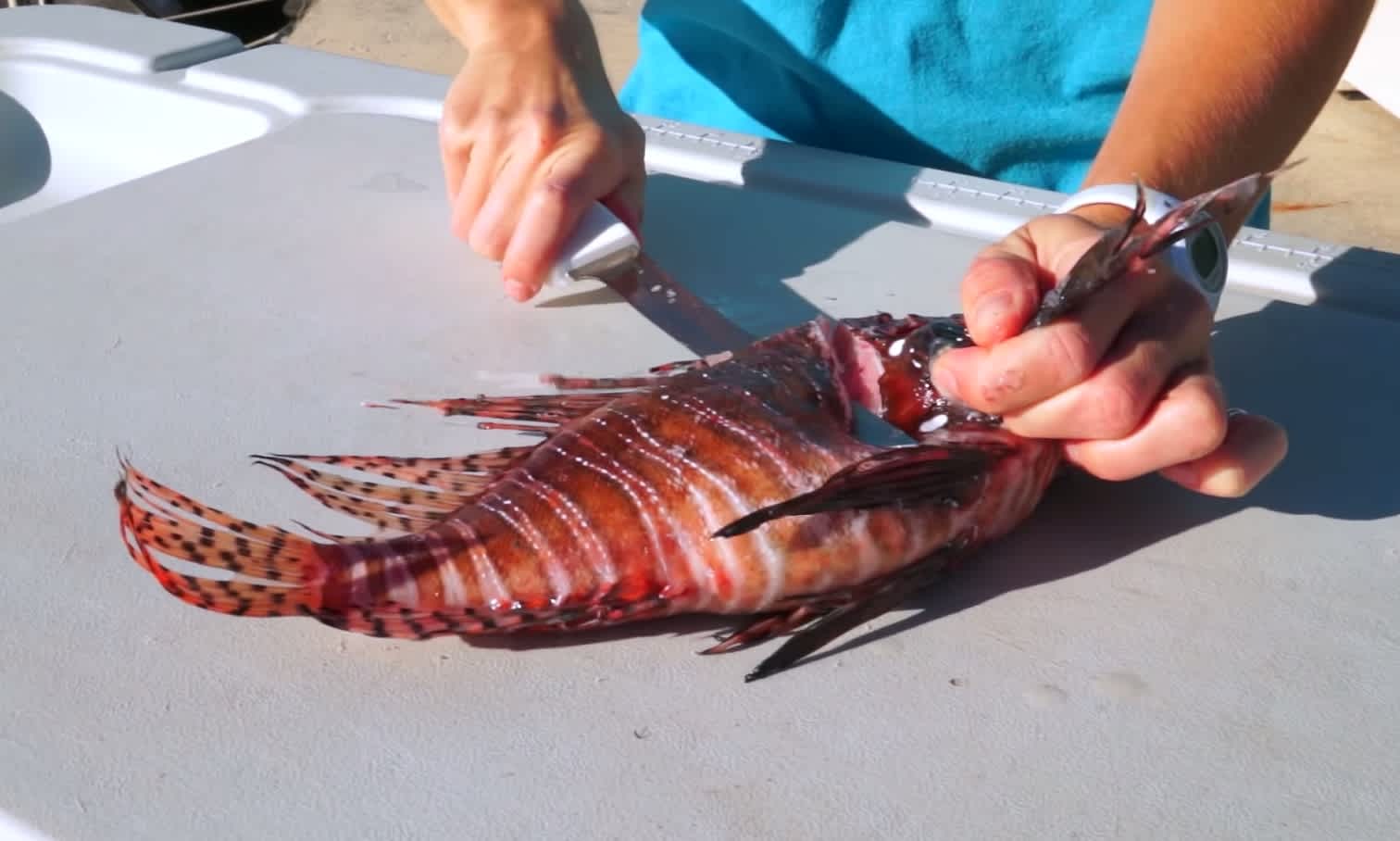Do Your Part: 5 Invasive Species You Can Hunt or Catch
Daniel Xu 07.27.15

Want to help out the environment and enjoy some time in the outdoors at the same time? Consider hunting, trapping, or fishing for one of the species below. Invasive animals are an ever-present danger to the native species we know and love, and sometimes they can taste pretty good, too. Whether you want to try out your new AR-15 or get a fillet of lionfish, pursuing one of these animals on your next hunt or day on the water could make for a great combination of conservation and outdoor fun.
1. Feral hogs
There are currently more than five million feral hogs in the United States, with roughly half of them living in Texas. These animals are so adaptable and breed so quickly, scientists say that hunters and trappers need to eliminate more than half of their total population every year just to control their numbers. Of course, that’s much easier said than done and these animals have continued to spread. Not only do they cause widespread environmental and agricultural damage, but the swine also compete with popular game species such as deer and turkey. Thankfully, there seems to be no shortage of demand for hunters and trappers to harvest them.
If you ever have a need for more bacon, consider going after one of these critters—or 18 of them.
You can learn more about wild pigs in the below video by Texas Parks and Wildlife.
2. Asian carp
You knew this had to make the list. Collectively called Asian carp, these highly adaptable fish are one of the top threats to native fish species in the United States today. Especially of note are silver and bighead carp, which have spread across the Mississippi River and are now threatening the Great Lakes, endangering a $7 billion recreational fishing industry and provoking lawmakers to consider decades-long, highly expensive plans to keep the carp out.
These fish may be hard to catch on rod and reel, but are very popular among bowfishermen and have little in the way of bag limits. Despite their reputation for tasting like a cooked shoe, many anglers have also figured out ways to make carp more palatable.
You can learn some simple recipes from the Missouri Department of Conservation below:
3. Nutria
This over-sized rat is just up to no good. Originally from South America, nutria have begun moving into Louisiana’s coastal wetlands and are now being blamed for everything from the state’s eroding coastline to vast and sustained damage to native vegetation. That blame is not exactly misplaced. By some estimates, there are now as many as 18 nutria per acre in the more infested regions of the coast, and these quick breeders aren’t likely to go anywhere soon. In 2013, Louisiana hunters harvested more than 388,160 of the critters, which hardly made any significant dent.
If you’re interested, the Louisiana Nutria Control Program is still offering a $4 bounty for every nutria harvested and turned in.
Louisiana’s wetlands aren’t the only ones threatened by this voracious rodent, which you can learn more about below:
4. European starlings
Wait, these cute little birds are invasive? Yes, and very much so. The starling is incredibly destructive—it can pass transmit diseases to livestock, destroy wide swathes of farmland, and out-compete native bird species. Large groups of starlings can even pose problems for passenger planes. All these factors combined make it arguably one of the most hated bird species in North America.
Oh, and did we mention that they are very, very aggressive? You can see a kestrel fight a starling for control of a nestbox below. Keep in mind that is just one starling, and they usually come in giant swarms.
Luckily, they are easily dispatched by air rifles, or if you want to harvest a bunch at once, shotguns.
5. Red lionfish
Biologists working to preserve America’s coasts can generally agree on one thing: lionfish are one of the worst nonnative species to hit the country’s marine ecosystem in recent memory.
Lionfish were first discovered off the coast of Florida in 1985, believed to have been released by careless aquarium owners. The fish is originally native to the Indo-Pacific region, but managed to thrive and quickly outpace native species in the warm lower stretches of the Atlantic. The National Oceanic and Atmospheric Administration (NOAA) has recorded sightings of the species along the East Coast and as far away as the Bahamas, where the fish are accused of severely depleting native prey fish populations.
What makes them so bad?
Lionfish are voracious predators that dine primarily on small fish. The species they prey on are often vital to the coral reefs in which they live, and the invasive animals have been reducing their targets’ ranks by as much as 70 percent. The predators also carry venomous spines that can injure and paralyze recreational divers. Worse yet, ocean currents are expected to disperse the lionfish to waters where populations have not been established.
Scientists are even considering going to extremes such as training sharks to eat them. For now, spearfishering remains one of the best methods of controlling their numbers, and it seems that demand for lionfish meat is rising.
They can be somewhat complicated to fillet. You can learn some tips below:

